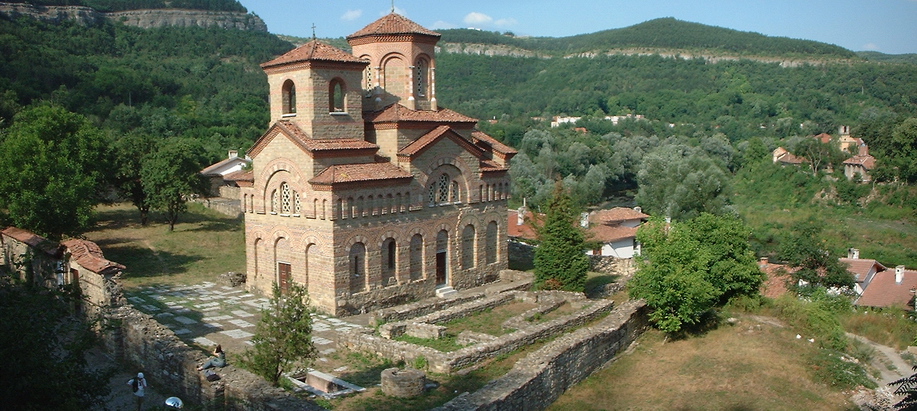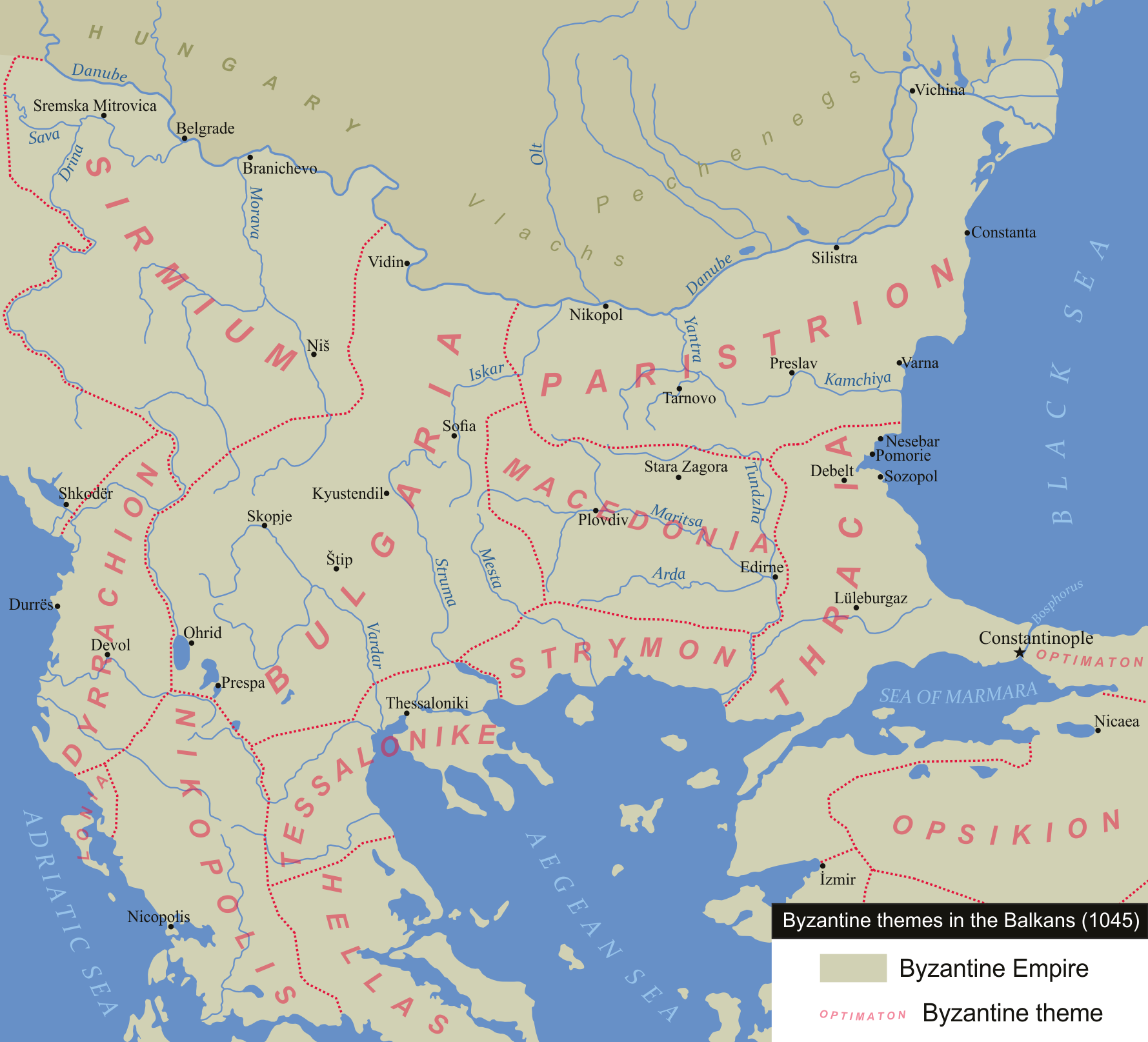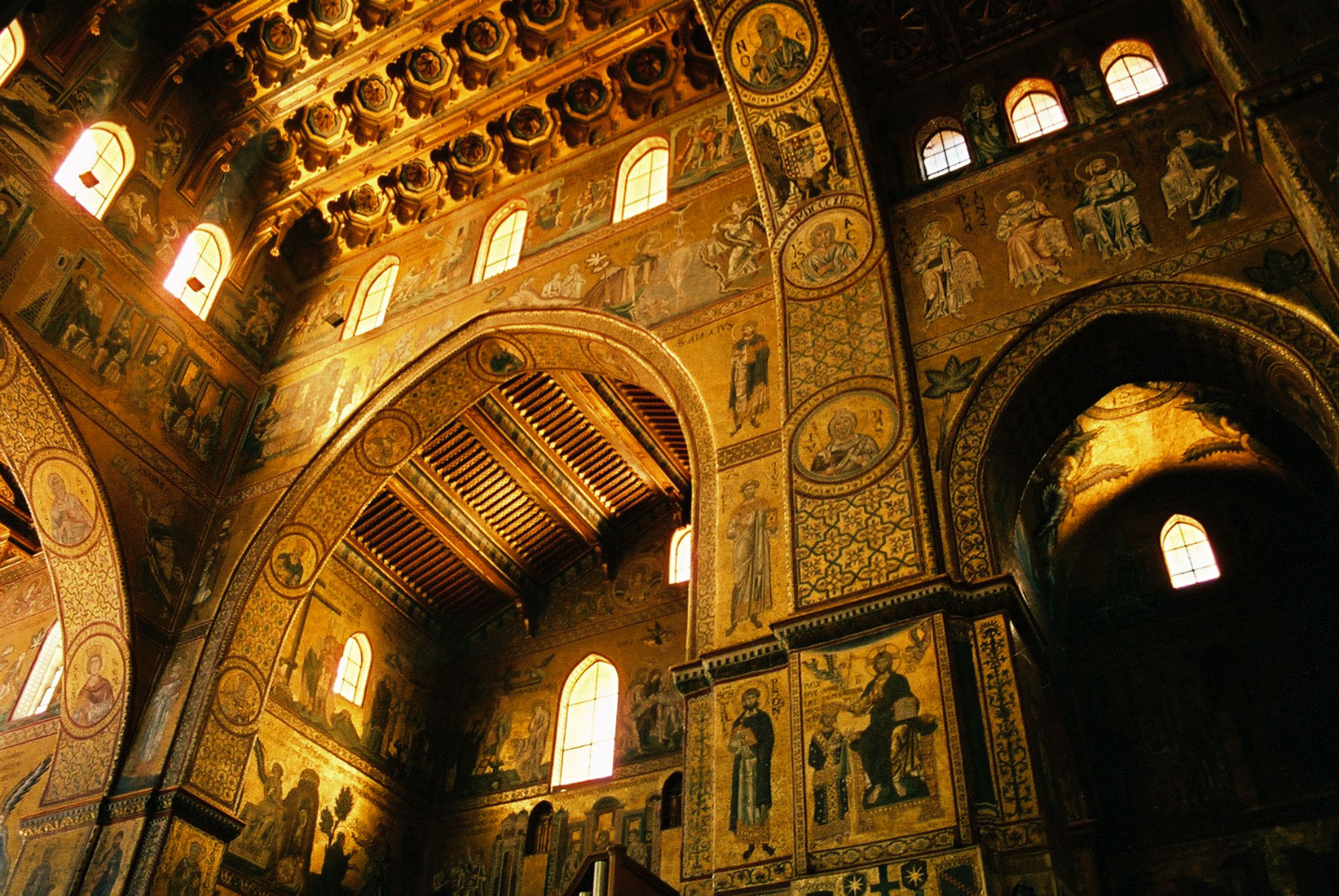|
1185
Year 1185 ( MCLXXXV) was a common year starting on Tuesday (link will display the full calendar) of the Julian calendar. Events By place Byzantine Empire * August – King William II (the Good) lands in Epirus with a Siculo-Norman expeditionary force of 200 ships and 80,000 men (including 5,000 knights), and marches as far as the Byzantine city of Thessalonica, which he takes and pillages (massacring some 7,000 Greek citizens). * September 11– 12 – Isaac II (Angelos) leads a revolt in Constantinople and deposes Emperor Andronikos I (Komnenos). Andronikos tries in vain to flee across Asia – but he is captured and killed by an angry mob. Isaac is proclaimed emperor, ending the Komnenos Dynasty. * November 7 – Battle of Demetritzes: A reinforced Byzantine army under Alexios Branas decisively defeats William II – ending his invasion of the Byzantine Empire. Thessalonica is recaptured, and the Normans are pushed back to Italy. Many Norman ships ... [...More Info...] [...Related Items...] OR: [Wikipedia] [Google] [Baidu] |
Second Bulgarian Empire
The Second Bulgarian Empire (; ) was a medieval Bulgarians, Bulgarian state that existed between 1185 and 1396. A successor to the First Bulgarian Empire, it reached the peak of its power under Tsars Kaloyan of Bulgaria, Kaloyan and Ivan Asen II before gradually being conquered by the Ottoman Empire, Ottomans in the late 14th century. Until 1256, the Second Bulgarian Empire was the dominant power in the Balkans, defeating the Byzantine Empire in several major battles. In 1205, Emperor Kaloyan defeated the newly established Latin Empire in the battle of Adrianople (1205), Battle of Adrianople. His nephew Ivan Asen II defeated the Despotate of Epiros and made Bulgaria a regional power again. During his reign, Bulgaria spread from the Adriatic Sea, Adriatic to the Black Sea and the economy flourished. In the late 13th century, however, the Empire declined under constant invasions by Mongols, Byzantine Empire, Byzantines, Hungarians, and Serbia in the Middle Ages, Serbs, as well as i ... [...More Info...] [...Related Items...] OR: [Wikipedia] [Google] [Baidu] |
Isaac II Angelos
Isaac II Angelos or Angelus ( grc-gre, Ἰσαάκιος Κομνηνός Ἄγγελος, ; September 1156 – January 1204) was Byzantine Emperor from 1185 to 1195, and again from 1203 to 1204. His father Andronikos Doukas Angelos was a military leader in Asia Minor (c. 1122 – aft. 1185) who married Euphrosyne Kastamonitissa (c. 1125 – aft. 1195). Andronikos Doukas Angelos was the son of Constantine Angelos and Theodora Komnene (b. 15 January 1096/1097), the youngest daughter of Emperor Alexios I Komnenos and Irene Doukaina. Thus Isaac was a member of the extended imperial clan of the Komnenoi. Rising by revolt Niketas Choniates described Isaac's physical appearance: "He had a ruddy complexion and red hair, was of average height and robust in body". During the brief reign of Andronikos I Komnenos, Isaac was involved (alongside his father and brothers) in the revolt of Nicaea and Prousa. Atypically, the Emperor did not punish him for this disloyalty, an ... [...More Info...] [...Related Items...] OR: [Wikipedia] [Google] [Baidu] |
Andronikos I Komnenos
Andronikos I Komnenos ( gr, Ἀνδρόνικος Κομνηνός; – 12 September 1185), Latinization of names, Latinized as Andronicus I Comnenus, was Byzantine emperor from 1183 to 1185. He was the son of Isaac Komnenos (son of Alexios I), Isaac Komnenos and the grandson of the emperor Alexios I Komnenos, Alexios I. In later Byzantine historiography, Andronikos I became known under the epithet "Misophaes" ("Hater of Sunlight") in reference to the great number of enemies he had Political mutilation in Byzantine culture, blinded. Early years Andronikos Komnenos was born around 1118. Most of what is known of him is from the writings of the historian Niketas Choniates,Niketas Choniates, ''Annals,'' XIX. certain passages in a work by Eustathios, 'The Capture of Thessaloniki', or inferred by later historians of the Byzantine Empire. He was handsome and eloquent, active, hardy, courageous, a great general and an able politician, but also licentious. His early years were spent ... [...More Info...] [...Related Items...] OR: [Wikipedia] [Google] [Baidu] |
Peter II Of Bulgaria
Peter II,), because they take into consideration two previous leaders of anti-Byzantine rebellions, Peter Delyan (who assumed the imperial title in 1040) and Constantine Bodin (who took the name Peter in 1072)., group=note born Theodor, also known as Theodor-Peter ( bg, Теодор-Петър; died in 1197), was the first emperor or tsar of the restored Bulgarian Empire from 1185 to 1197. He hails from the Byzantine theme of Paristrion, although his exact place and date of birth are unknown. He and his younger brothers, Asen and Kaloyan, were mentioned as Vlachs in most foreign contemporaneous sources, but they were probably of a mixed Vlach, Bulgarian, and Cuman origin. In 1185, Theodor and Asen approached the Byzantine Emperor Isaac II Angelos in Thrace, demanding an estate in the Balkan Mountains. After the Emperor refused and humiliated them, they decided to incite a rebellion, taking advantage of the discontent that a new tax had caused among the Bulgarians and Vlachs. ... [...More Info...] [...Related Items...] OR: [Wikipedia] [Google] [Baidu] |
Ivan Asen I Of Bulgaria
Ivan Asen I, also known as Asen I or John Asen I ( bg, Иван Асен I; died in 1196), was emperor or tsar of Bulgaria from 1187/1188 to 1196 as co-ruler with his elder brother, Peter II. Hailing from the Byzantine theme of Paristrion, his exact place and date of birth are unknown. Although most contemporaneous chronicles describe Asen and his brothers, Theodor (Peter) and Kaloyan, as Vlachs, they were probably of mixed Vlach, Bulgarian, and Cuman ancestry. In 1185, Asen and Theodor went to see the Byzantine Emperor Isaac II Angelos in Thrace to demand an estate in the Balkan Mountains. After the Emperor refused and humiliated them, the brothers persuaded their Bulgarian and Vlach compatriots to rise up against the Byzantine Empire. Before the end of the year, Theodor was crowned Emperor of Bulgaria, taking the name Peter. After Isaac II defeated them in early 1186, Asen and Peter fled north over the Danube but returned in the autumn, accompanied by Cuman reinforcements. Th ... [...More Info...] [...Related Items...] OR: [Wikipedia] [Google] [Baidu] |
Sack Of Thessalonica (1185)
The sack of Thessalonica in 1185 by Normans of the Kingdom of Sicily was one of the worst disasters to befall the Byzantine Empire in the 12th century. Siege David Komnenos, the governor of the city, had neglected to make sufficient preparations for the siege and even forbade sallies by the defenders to disrupt the Norman siege works. The Byzantine relief armies failed to coordinate their efforts, and only two forces, under Theodore Choumnos and John Maurozomes, actually came to the city's aid. In the event, the Normans undermined the city's eastern wall, opening a breach through which they entered the city. The conquest degenerated quickly into a full-scale massacre of the city's inhabitants, some 7,000 corpses being found afterwards. The siege is extensively chronicled by the city's archbishop, Eustathius of Thessalonica, who was present in the city during and after the siege. Aftermath The Normans occupied Thessalonica until mid-November, when, following their defeat at t ... [...More Info...] [...Related Items...] OR: [Wikipedia] [Google] [Baidu] |
Battle Of Demetritzes
The Battle of Demetritzes in 1185 was fought between the Byzantine army and the Normans of the Kingdom of Sicily, who had recently sacked and captured the Byzantine Empire's second city, Thessalonica. It was a decisive Byzantine victory, which led to the immediate re-occupation of Thessalonica and ended the Norman threat to the Empire. Background The fall of Thessalonica and the Norman advance towards Constantinople precipitated the downfall of the Byzantine emperor Andronikos I Komnenos and the elevation of Isaac II Angelos. The elevation of the new emperor led to an influx of volunteers from Byzantine Anatolia to fight the Normans. Isaac armed and paid these troops, and sent them off to join the field army already assembled under the experienced general Alexios Branas, which was placed to block the Norman advance. To the field army he sent 4,000 pounds of gold as pay and as a donative. The Norman army that had captured Thessalonica was divided into three parts, one part rem ... [...More Info...] [...Related Items...] OR: [Wikipedia] [Google] [Baidu] |
Uprising Of Asen And Peter
__NOTOC__ The Uprising of Asen and Peter ( bg, Въстание на Асен и Петър) was a revolt of Bulgarians and Vlachs living in Moesia and the Balkan Mountains, then the theme of Paristrion of the Byzantine Empire, caused by a tax increase. It began on 26 October 1185, the feast day of St. Demetrius of Thessaloniki, and ended with the restoration of Bulgaria with the creation of the Second Bulgarian Empire, ruled by the Asen dynasty. Isaac II Angelus, in order to raise money for his wedding with the daughter of King Béla III of Hungary, levied a new tax which fell heavily on the population of the Haemus Mountains. They sent two leaders ( Peter and Asen) to negotiate with the emperor at Kypsella (now İpsala) in Thrace. They asked to be added to the roll of the Byzantine army and to be granted land near Haemus to provide the monetary income needed to pay the tax. This was refused, and Peter and Asen were treated roughly. Their response was to threaten revolt. ... [...More Info...] [...Related Items...] OR: [Wikipedia] [Google] [Baidu] |
Komnenos
Komnenos ( gr, Κομνηνός; Latinized Comnenus; plural Komnenoi or Comneni (Κομνηνοί, )) was a Byzantine Greek noble family who ruled the Byzantine Empire from 1081 to 1185, and later, as the Grand Komnenoi (Μεγαλοκομνηνοί, ''Megalokomnenoi'') founded and ruled the Empire of Trebizond (1204–1461). Through intermarriages with other noble families, notably the Doukai, Angeloi, and Palaiologoi, the Komnenos name appears among most of the major noble houses of the late Byzantine world. Origins The 11th-century Byzantine historian Michael Psellos reported that the Komnenos family originated from the village of Komne in Thrace—usually identified with the "Fields of Komnene" () mentioned in the 14th century by John Kantakouzenos—a view commonly accepted by modern scholarship. The first known member of the family, Manuel Erotikos Komnenos, acquired extensive estates at Kastamon in Paphlagonia, which became the stronghold of the family in the 11th centur ... [...More Info...] [...Related Items...] OR: [Wikipedia] [Google] [Baidu] |
William II Of Sicily
William II (December 115311 November 1189), called the Good, was king of Sicily from 1166 to 1189. From surviving sources William's character is indistinct. Lacking in military enterprise, secluded and pleasure-loving, he seldom emerged from his palace life at Palermo. Yet his reign is marked by an ambitious foreign policy and a vigorous diplomacy. Champion of the papacy and in secret league with the Lombard cities, he was able to defy the common enemy, Frederick Barbarossa. In the ''Divine Comedy'', Dante places William II in Paradise. He is also referred to in Boccaccio's ''Decameron'' (tale IV.4, where he reportedly has two children, and tale V.7). William was nicknamed "the Good" only in the decades following his death. It is due less to his character than to the cessation of the internal troubles that plagued his father's reign and the wars that erupted under his successor. Under the Staufer dynasty his reign was characterised as a golden age of peace and justice. His numer ... [...More Info...] [...Related Items...] OR: [Wikipedia] [Google] [Baidu] |
Byzantine Empire
The Byzantine Empire, also referred to as the Eastern Roman Empire or Byzantium, was the continuation of the Roman Empire primarily in its eastern provinces during Late Antiquity and the Middle Ages, when its capital city was Constantinople. It survived the fragmentation and fall of the Western Roman Empire in the 5th century AD and continued to exist for an additional thousand years until the fall of Constantinople to the Ottoman Empire in 1453. During most of its existence, the empire remained the most powerful economic, cultural, and military force in Europe. The terms "Byzantine Empire" and "Eastern Roman Empire" were coined after the end of the realm; its citizens continued to refer to their empire as the Roman Empire, and to themselves as Romans—a term which Greeks continued to use for themselves into Ottoman times. Although the Roman state continued and its traditions were maintained, modern historians prefer to differentiate the Byzantine Empire from Ancient Rome ... [...More Info...] [...Related Items...] OR: [Wikipedia] [Google] [Baidu] |
Constantinople
la, Constantinopolis ota, قسطنطينيه , alternate_name = Byzantion (earlier Greek name), Nova Roma ("New Rome"), Miklagard/Miklagarth (Old Norse), Tsargrad ( Slavic), Qustantiniya (Arabic), Basileuousa ("Queen of Cities"), Megalopolis ("the Great City"), Πόλις ("the City"), Kostantiniyye or Konstantinopolis ( Turkish) , image = Byzantine Constantinople-en.png , alt = , caption = Map of Constantinople in the Byzantine period, corresponding to the modern-day Fatih district of Istanbul , map_type = Istanbul#Turkey Marmara#Turkey , map_alt = A map of Byzantine Istanbul. , map_size = 275 , map_caption = Constantinople was founded on the former site of the Greek colony of Byzantion, which today is known as Istanbul in Turkey. , coordinates = , location = Fatih, İstanbul, Turkey , region = Marmara Region , type = Imperial city , part_of = , length = , width ... [...More Info...] [...Related Items...] OR: [Wikipedia] [Google] [Baidu] |








